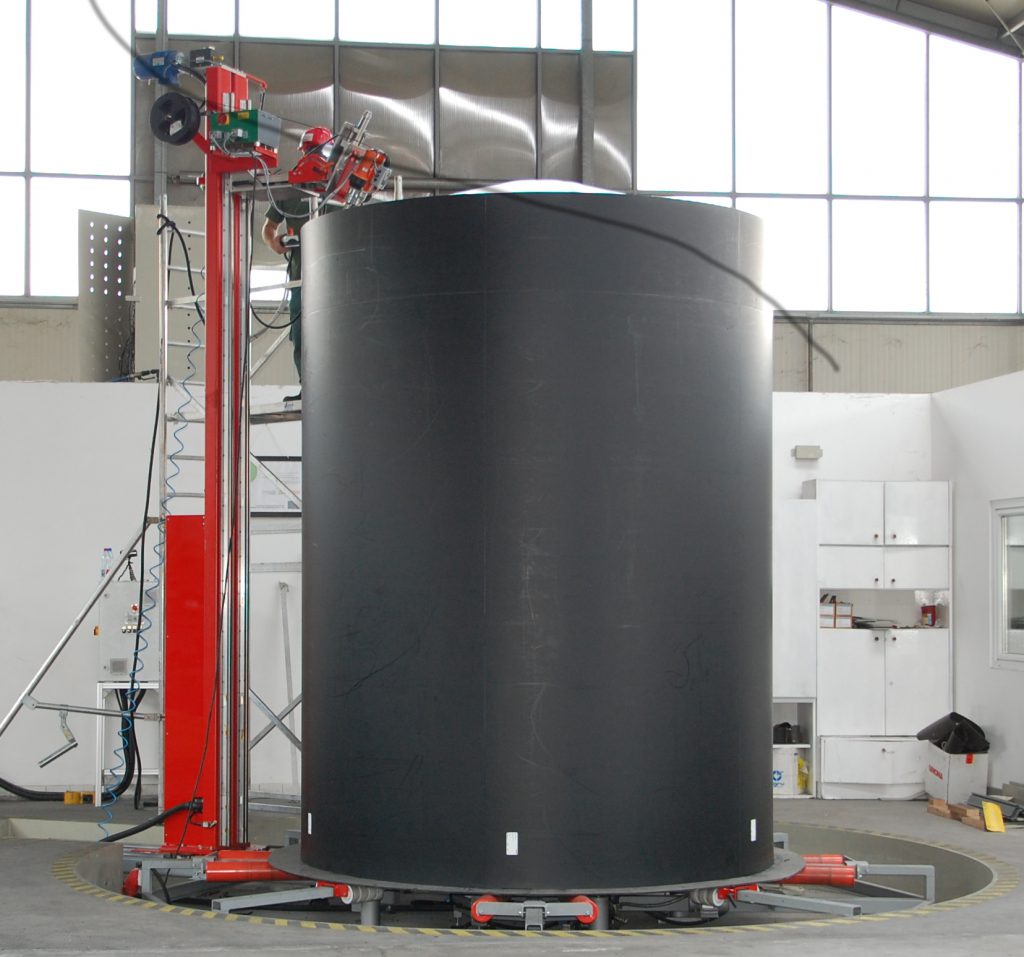Comprehensive Container Welding Evaluation for Industrial Safety And Security and Regulatory Conformity
Guaranteeing commercial security and governing compliance within the realm of storage tank welding assessments is a crucial aspect of maintaining functional stability and mitigating prospective dangers. The thorough evaluation of weld top quality, product density, and total tank problem is vital in safeguarding against architectural failings and environmental dangers. By delving right into the intricacies of detailed container welding evaluations, a deeper understanding arises of the diverse approaches utilized to support market criteria and support security methods.
Value of Storage Tank Welding Evaluations
Conducting detailed and periodic container welding assessments is necessary in making sure the structural honesty, safety and security standards, and regulatory compliance of commercial storage tanks. These inspections play a vital function in recognizing any type of potential defects or weaknesses in the welded joints that can compromise the overall stability of the tank. By finding these issues at an early stage, business can take aggressive measures to resolve them quickly, thereby protecting against pricey fixings, environmental contamination, or, in the worst-case circumstance, devastating failings.
Normal tank welding evaluations likewise aid organizations follow sector regulations and standards set forth by authorities such as the American Oil Institute (API) or Occupational Safety and Health And Wellness Management (OSHA) Failing to satisfy these requirements can cause penalties, legal repercussions, or also the suspension of operations. Tank Welding Inspection Service. As a result, purchasing extensive storage tank welding examinations not only safeguards the well-being of workers and the surrounding setting yet also safeguards the firm's track record and bottom line in the future
Secret Elements of Weld Top Quality Evaluation
Ensuring the quality of welds includes a careful assessment of crucial parts that contribute to the structural integrity and integrity of commercial containers. One important element of weld high quality evaluation is the evaluation of weld infiltration. Proper infiltration is essential as not enough penetration can lead to weld defects and jeopardize the strength of the joint. Additionally, the weld's account must be assessed to guarantee that it fulfills the given requirements in terms of shapes and size. The visibility of any gaps, such as splits, porosity, or incomplete fusion, need to be extensively inspected as these can compromise the weld and boost the chance of failing. Furthermore, the total weld look is additionally an essential component of high quality assessment, as it can indicate the existence of flaws or incongruities in the welding process. By comprehensively examining these essential elements, assessors can help ensure that welded joints satisfy the necessary requirements for safety and security and regulatory compliance in commercial storage tank building.
Product Thickness Examination Methods
In the context of weld quality analysis, an indispensable facet to take into consideration is the application of product density assessment techniques. Exact dimension of material density is essential in making sure the structural honesty and safety of bonded containers. Numerous non-destructive testing (NDT) techniques are employed for evaluating material density, consisting of ultrasonic testing, radiographic testing, and magnetic fragment assessment. Ultrasonic testing entails making use of high-frequency audio waves to determine product thickness by determining the time considered the audio waves to take a trip with the material and show back. Radiographic screening utilizes X-rays or this gamma rays to create images showing material thickness. Magnetic fragment evaluation works for identifying surface area and near-surface flaws that may affect product thickness. These methods not only assist in examining the thickness of products yet additionally aid in determining any prospective issues or stoppages that might endanger the weld high quality and general honesty of the storage tank structure. By utilizing these product thickness analysis methods, markets can guarantee conformity with safety requirements and regulations, thereby boosting general operational safety and reliability.
Container Problem Assessment Methods
A crucial facet in preserving the stability and safety of pop over here bonded tanks is the detailed examination of storage tank problems through reliable examination approaches. Storage tank condition evaluation methods play an essential function in guaranteeing the structural strength and functional effectiveness of industrial tanks. Routine evaluations using these techniques are essential for stopping devastating failings and ensuring the long-term reliability of bonded storage tanks.
Benefits of Normal Inspection Practices
Normal examination techniques not just secure against prospective issues discovered throughout tank condition examination techniques but likewise function as aggressive measures in supporting the architectural integrity and functional efficiency of welded tanks. By performing regular assessments, commercial facilities can recognize any kind of signs of rust, fractures, leakages, or other flaws in the storage tank welds promptly. This early discovery allows timely repairs or upkeep treatments, avoiding tiny issues from escalating into bigger, more costly problems that could endanger safety and security or bring about regulative non-compliance.

Conclusion

Finally, thorough tank welding inspections are necessary for making sure industrial security and regulatory conformity. By performing routine inspections and analyses of weld top quality, product thickness, and storage tank condition, organizations can recognize potential dangers and prevent expensive mishaps. Carrying out a positive method to assessment methods can help preserve the structural integrity of tanks, secure the setting, and make sure the safety and security of employees and the surrounding community.
